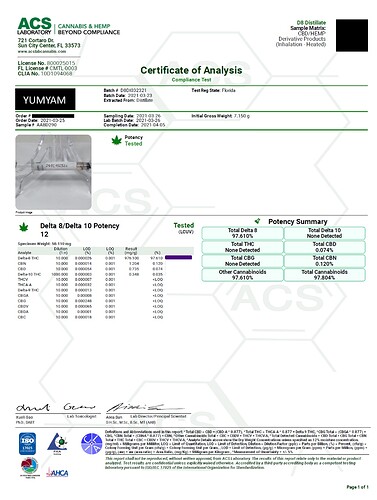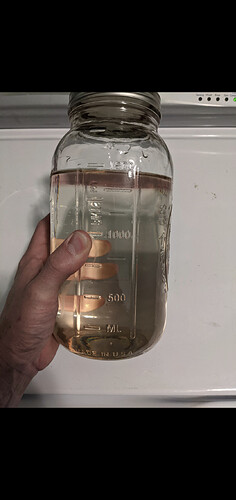Just wanted toshow off our latest and greatest. Not selling this yet as we need to validate with additonal commercial runs. I am firm in provided specs in addition to a standard coa. This sample came off a 10 kg batch and is a colorless final product. Located in the mid-west.
What’s it look like in a liter?
Guarantee there is some d9 in there though. Great looking product nonetheless.
Selling any yet?
I’ve tested a few “compliant” samples from ACS. No one has passed yet
How do I get the license to use that DEA logo on our COAs? Anybody have that in?
Photoshop ![]()
![]()
![]()
But we paid the fee, too.
How about you get a verification: Slangers, Read this BEFORE Posting Hemp Products for Sale - Verified / Verification Post - #410 by KandThegingchemist
@TheFeds is THE PLUG though!
all you have to do is blame the weed and photoshop it on… you can put all agencies if you please. i think endorse by all the 3 letter agencies would make you stand out more…
What license are you referring to exactly?
The DEA considers D8 to be a Schedule 1 controlled cannabinoid substance.
Your only legal defense is the 2018 Farm Bill but it hasn’t been tried in court yet, IIRC.
If they chose to prosecute it at the Federal level, they will call it a “synthetically derived THC substance” thus already illegal = you’re fucked.
Good luck with that.
What uncertainty of measurement do you report with your analyses?
To be honest I just look at the LC chromatogram and if I can see an obvious peak it’s not even worth analyzing.
I’m learning that it is pretty difficult to get down to .3% and test accurately
The d10 is shown at 0.035% but not on the right side call out of the COA. The total cannabinoid math also does not include the d10.
And what is with the <LOQ for all the cannabinoids? There most certainty should not be any acidic cannabinoids in a distillate. You would report these as ND or <LOD, but <LOQ implies you have a peak detected but statistically (based on method) you cannot quantify it.
Really strange COA overall.
Yea for sure. That’s why I am starting to think most testing for compliance is bullshit because without reporting uncertainty of error, there’s no confidence the final value is actually within an acceptable range. If I come out at 0.24% w/w d9-thc, but the error is +/- 0.08%, are we comfortable calling that compliant? Every step of the sample prep, along with the error of the detector, will have some contributing error on the end result. Speaking of sample prep, volumetric prep vs gravimetric prep is also going to play into the variation. I think gravimetric is more accurate (volume sucks, its susceptible expansion with temperature changes) but for those starting out I advise running volumetrically until they’re comfortable.
Also, how the LOD and LOQ are calculated will have an impact. For example, calculating in terms of signal to noise ratio versus using the standard error of regression (STYEX) versus taking the standard deviation of seven area counts of seven injections and multiply by 3.3 divided by the slope of the regression curve will give different LODs. So what is the ‘right’ way (it is a rhetorical question)?
With really low concentrations, peak integration can be tricky. I wonder how many testers are running hardware and a method that can reliably integrate and quantitative repeated low conc. areas? I think the way to level up this testing is to hit the statistics hard. I realize this is perhaps the most ‘unsexy’ aspect of this, but its important to bring this to the next level. There is no such thing as an absolute measurement,
Can you share the chromatogram? I have a feeling most people here don’t believe this COA.

